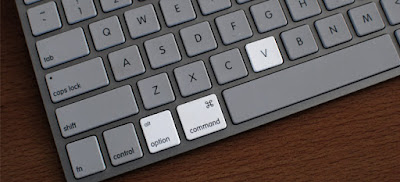Whether you are making use of
OS X El Capitan or MacOS Sierra, these alternate routes will make you quicker
at discovering things with Finder.
1.
Set a default folder
If you explore to a specific folder
frequently, then you can set it as your default and spare yourself a couple
snaps every time you open Finder. Tap the Finder menu in the menu bar and
select Preferences. Under the General tab, you will see that for New Finder
windows appear, the default is All My Files. You can change to your Home or
Documents folder or whichever folder you utilize the most.
2.
Two new Sierra settings
If you are making use of MacOS
Sierra, tap the Advanced tab in
Preferences and you'll see two new check boxes:
·
Expel things from the Trash following 30 days
·
Keep folders on top when sorting by name
The principal helps you keep
your waste from flooding with documents, and the second helps you explore
Finder all the more effortlessly by gathering your folders over your documents.
3.
Open, says me
Hit Command-N to open new
Finder window. Hit Command-T to open new Finder tab.
4.
Open particular folder in Finder
Utilize the accompanying
console easy routes to open a particular folder in Finder:
Command-Shift-C……………Top-level
Computer folder
Command-Shift-D …………… Desktop
folder
Command-Shift-F …………… All My
Files folder
Command-Shift-G …………… Go to
Folder window
Command-Shift-H …………… Home
folder for your account
Command-Shift-I …………… iCloud
Drive folder
Command-Shift-O …………… Documents
folder
Command-Shift-R …………… AirDrop
folder
Command-Shift-U …………… Utilities
folder
Command-Option-L ……………
Downloads folder
5.
Begin a hunt in Finder
Hit Command-F to open Finder
with the hunt bar initiated.
6.
Get Info
Hit Command-I to open the Get
Info board for a chose document where you can see the sort of document, its
size, when it was made and last adjusted, among different traits.
7.
Sidebar alternate ways
Hit Command-Option-S to appear
or conceal Finder's sidebar. Hit Command-Control-T to include a chose thing - a
folder, generally - to the sidebar.
8.
Different bars
Utilize
Command-Option-P to appear or conceal the way bar. It's a
slender bar along the base edge of Finder that demonstrates to you the folder
way to the document you at present have chosen.
Utilize
Command-/to appear or conceal the status bar. The status
bar sits beneath the way bar and demonstrates to you what number of documents
you have chosen out of what number of aggregate documents in the present folder
you are review. If you are making use of iCloud, it likewise indicates how much
space you have staying on Apple's cloud benefit.
9.
Change Finder sees
You can change the perspective
of Finder by tapping the four catches in the menu bar at the highest point of a
Finder window. Then again, you can utilize console alternate routes:
Order 1 - symbol see
Order 2 - list see
Charge 3 - section see
Charge 4 - Cover Flow see
10.
See your View Options
Hit Command-J to open the View
Options board. This gives you a chance to pick, in addition to other things,
the sorts of sections Date Modified, Size, Tags, et cetera that need to see for
Finder's segment see. You can set diverse sections to appear for changed folders
in Finder.
11.
Fast Look slideshow
The Quick Look catch (the
eyeball catch in the Toolbar) is helpful for rapidly reviewing documents,
sparing you from expecting to open another application. You can bounce directly
into a full-screen slideshow by holding down the Option key while tapping the
Quick Look catch.
12.
New folders
Hit Command-Shift-N to make
another folder in Finder. Hit Command-Option-N to make another shrewd folder. A
Smart folder shows documents via look criteria you characterize and are
redesigned on the fly as you change, include and expel documents. For
additional, read How to make and convey shrewd folders in OS X.
13.
Alternate route to waste can
Spare yourself the
inconvenience of dragging a document to the waste can in your Dock. Rather,
select the documents or folders in Finder you'd get a kick out of the chance to
waste and hit Command-Delete. In related news, you can hit Command-Shift-Delete
to exhaust the waste.
14.
Add document or folder to the Dock
Utilize Command-Control-Shift-T
to add a document or folder to the Dock. It will sit to one side of the Dock's
divider.
15.
Modify the toolbar
From the top menu, go to View >>
Customize Toolbar to drag catches to and from the toolbar at the highest point
of Finder. If you find that you don't care for the progressions you made,
simply drag the default set back to Finder to begin once more.

Customer helpline number is +1 8-6-6 5-2-8 5-O-O-7
ReplyDeleteBest information ever '''''''''''./